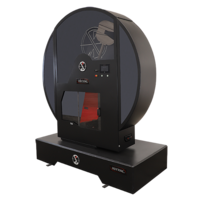
Photo from wikipedia
In continuous testing, developers execute automated test cases once or even several times per day to ensure the quality of the integrated code. Although continuous testing helps ensure the quality… Click to show full abstract
In continuous testing, developers execute automated test cases once or even several times per day to ensure the quality of the integrated code. Although continuous testing helps ensure the quality of the code and reduces maintenance effort, it also significantly increases test execution overhead. In this paper, we empirically evaluate the effectiveness of test impact analysis from the perspective of code dependencies in the continuous testing setting. We first applied test impact analysis to one year of software development history in 11 large-scale open-source systems. We found that even though the number of changed files is small in daily commits (median ranges from 3 to 28 files), around 50 percent or more of the test cases are still impacted and need to be executed. Motivated by our finding, we further studied the code dependencies between source code files and test cases, and among test cases. We found that 1) test cases often focus on testing the integrated behaviour of the systems and 15 percent of the test cases have dependencies with more than 20 source code files; 2) 18 percent of the test cases have dependencies with other test cases, and test case inheritance is the most common cause of test case dependencies; and 3) we documented four dependency-related test smells that we uncovered in our manual study. Our study provides the first step towards studying and understanding the effectiveness of test impact analysis in the continuous testing setting and provides insights on improving test design and execution.
Journal Title: IEEE Transactions on Software Engineering
Year Published: 2022
Link to full text (if available)
Share on Social Media: Sign Up to like & get
recommendations!